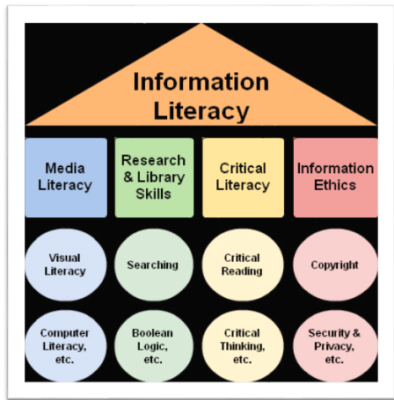APA referencing style is one of the most popular formats for academic writing. APA 7th is an author-date referencing style used in many subject areas, especially psychology, education, social science, etc. The guide is also based on the Publication Manual of the American Psychological Association, 7th ed. If you need to publish your articles or other work, you need to get information from the publishers as their requirements might slightly differ from this guide.
There are two parts in referencing:
- In-text citation
- Reference list entry (“References”)
DIRECT QUOTE
Copy exactly the words, sentences, and paragraphs that the author uses
40 words or less
- Use quotation marks to close the quote;
- Including author, publication year and page number.
Example
Narrative: According to Otung (2021)“Optical fiber has numerous advantages over radio and copper lines as a transmission medium” (p.20)
Parenthetical: Optical fiber has numerous advantages over radio and copper lines as a transmission medium (Otung, 2021, p.20)
When the page number is not available, use the paragraph number for sources
Example
“The energy invested in building materials and construction is significant” (Kibert, 2016, para.4)
More than 40 words
- Start with an independent block of text without quotation marks and indented from the left edge.
- Add addition information like: name of author, publication year, and page/paragraph number in parentheses.
Example
Distance education is a new trend in education that has benefited from developing information technology and tries to make the best use of new technologies for different geographical locations. That is why cloud computing is an attractive environment for students, teachers, and researchers. (Al-Malah et al., 2021, p.4)
PARAPHRASING
Paraphrasing is rewriting someone else’s ideas by writer’s own words.
Use the author-date citation system
Example
A literature review is a written document that presents a logically argued case founded on a comprehensive understanding of the current state of knowledge about a topic of study. Paraphrasing: A literature review is a document that provides a reasonably argued argument based on background of the existing information on a particular subject (Machi & McEvoy, 2016).
MULTIPLE SOURCES WITH THE SAME INFORMATION
When using several sources to support an argument or explain a consensus in your writing: All references are mentioned alphabetically in the same set of brackets in the in-text citation; Use semi colons to separate the citations, and reference list entry must be provided for each source.
Example
Various studies reports that Covid-19 has potential impact on environment (Cheval et al., 2020; Verma & Prakash, 2020; Sarkar et al., 2021; Shakil et al., 2020)
MULTIPLE WORKS BY THE SAME AUTHOR
Published in the same year
Two or more than two publications of an author in the same year must be separated by the expansion of a, b, etc. (whether or not they were composed, altered, gathered or deciphered), and are recorded in order by titles.
All work titles in the reference list order sequentially.
In-text citation
(Nguyen & Choi, 2009a). Nguyen and Choi (2009b) affirmed that…
Reference list
Nguyen, Q.-H., & Choi, S.-B. (2009a). Dynamic modeling of an electrorheological damper considering the unsteady behavior of electrorheological fluid flow. Smart Materials and Structures, 18(5), 055016. https://doi.org/10.1088/0964-1726/18/5/055016.
Nguyen, Q.-H., & Choi, S.-B. (2009b). A new approach for dynamic modeling of an electrorheological damper using a lumped parameter method. Smart Materials and Structures, 18(11), 115020. https://doi.org/10.1088/0964-1726/18/11/115020.
Published in different years
In the reference list, arrange the references in the chronological order.
In-text citation
Ahn and Le (2014) and Le et al. (2021) state….
Reference list
Ahn, H., & Le, M. H. (2014). An insight into the specification of the input-output set for DEA-based bank efficiency measurement. Management Review Quarterly, 64(1), 3–37. https://doi.org/10.1007/s11301-013-0098-9.
Le, M. H., Afsharian, M., & Ahn, H. (2021). Inverse frontier-based benchmarking for investigating the efficiency and achieving the targets in the Vietnamese education system. Omega, 102427. https://doi.org/10.1016/j.omega.2021.102427.
DIFFERENT AUTHORS WITH THE SAME SURNAME
With authors have the same family name when referring to two or more titles, include the first author’s initials name in intext citations and arrange the references in the chronological order.
In-text citation
(P. M. Ryan & Ryan, 2013); (H. J. Ryan, 1901)
Reference list
Ryan, H. J. (1901). The transformer for measuring large direct currents. Transactions of the American Institute of Electrical Engineers, XVIII, 165–190. https://doi.org/10.1109/T-AIEE.1901.4764174. Ryan, P. M., & Ryan, P. M. (2013). The Dreamer. Scholastic Inc.
AUTHORS CITING OTHER AUTHORS
Cite the original author when:
– The original source quoted by the secondary source;
– When a secondary source discusses a certain topic and writer repeat the study’s findings or arguments without consulting the primary source;
– Use the author-date citation system from the original source (author, year of publication and add “as cited in (Author and publication year of secondary source).”
– The reference list includes only the secondary source.
In-text citation
“Refers to one’s on-line awareness of comprehension and task performance” (G. Schraw & Moshman, 1995, as cited in Follmer & Tise, 2021, p.3).
Reference list
Follmer, D. J., & Tise, J. (2021). Across-task relations among monitoring judgments: Differential effects of item feedback on monitoring bias during reading. Learning and Individual Differences, 88, 102007. https://doi.org/10.1016/j.lindif.2021.102007.



